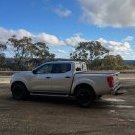Lambchop With A Renault Axis Here...
Announcements
-
Similar Content
-
Latest Posts
-
Hey all, Noticed I have a hole on top of which im guessing is my transfer case/gearbox. I can see it from the middle of my firewall looking down. S1 R33 gtr Any advice or can pinpoint what this is/caused this?
-
Looks like you were right on the T pattern! I did that and it's finally fixed! Thanks a bunch.
-
By Dose Pipe Sutututu · Posted
Replacing the entire system with a Bosch Motorsports ABS system fixes the issue @PranKhas Probably not the cheapest nor cost effective way to fix his ABS problem 😂
-







Recommended Posts
Create an account or sign in to comment
You need to be a member in order to leave a comment
Create an account
Sign up for a new account in our community. It's easy!
Register a new accountSign in
Already have an account? Sign in here.
Sign In Now